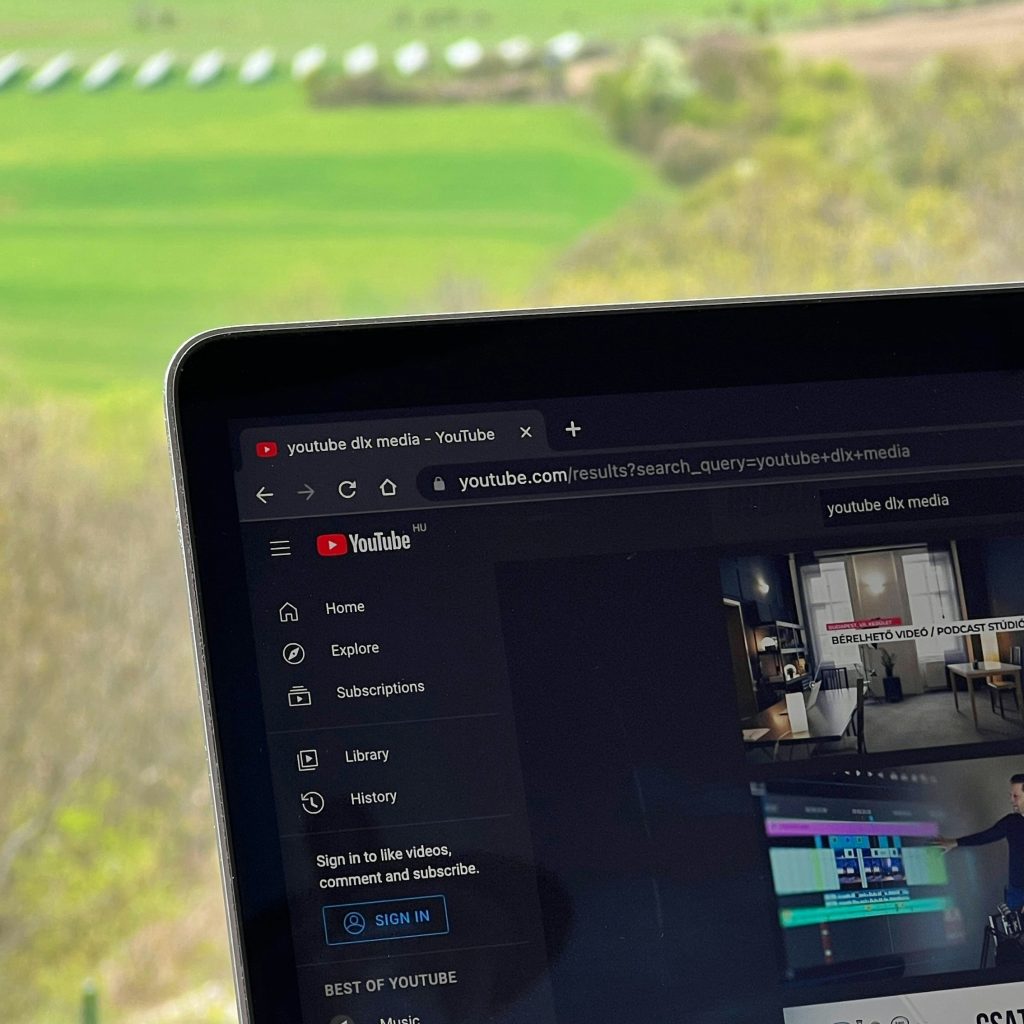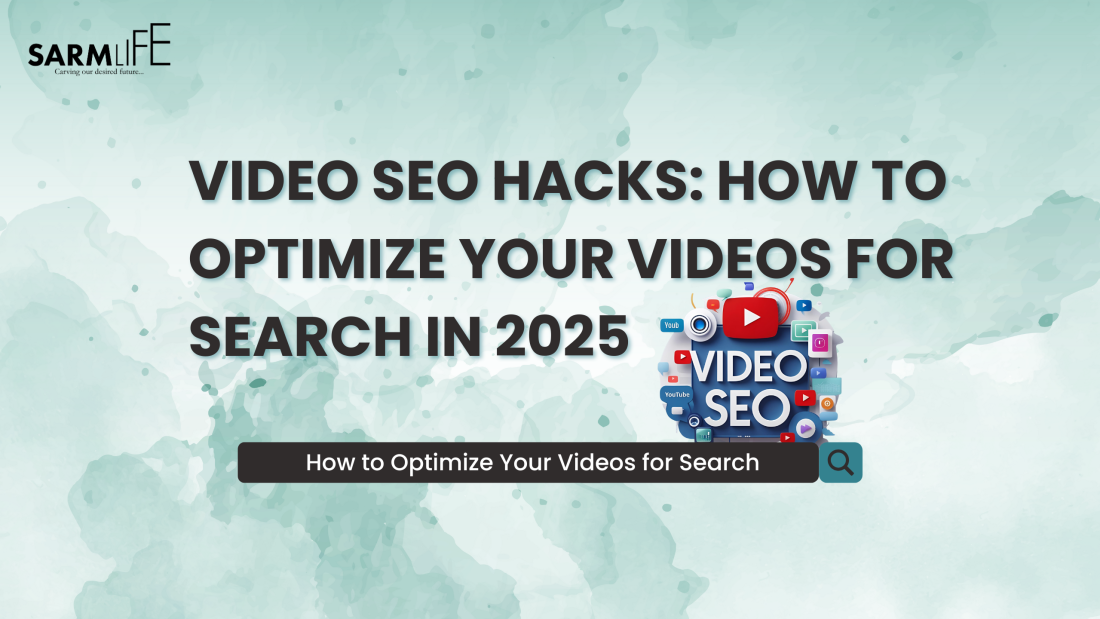If your business isn’t leveraging video content for SEO in 2025, you’re leaving visibility and conversions on the table.
Gone are the days when SEO was limited to keyword-rich blog posts and backlinks. Today, video content isn’t just trending; it’s dominating.
With platforms like YouTube doubling as search engines and Google integrating video results directly into SERPs, it’s clear: understanding and applying video SEO strategies is non-negotiable if you want to be seen.
In this blog post, we’ll unpack the latest video SEO strategies, walk you through how visual content boosts video SEO rankings, and show you how SARMLife helps creators, businesses, and marketers turn video into a serious SEO weapon.
RELATED BLOG POSTS
- HOW TO RUN AN EFFECTIVE CONTENT GAP ANALYSIS FOR SEO
- HOW TO OPTIMIZE YOUR CONTENT FOR EACH GOOGLE SERP FEATURE
- KEYWORD OPTIMIZATION IN SEO: 6 UNIQUE WAYS TO RANK HIGH
- HOW TO WRITE META DESCRIPTIONS FOR SEO + FREE TEMPLATES
Why Visual and Video Content Matters for SEO
Video content has become the heartbeat of modern digital strategy. Here’s why it’s a critical component of your SEO playbook:
- Boosts engagement: Pages with video are 53x more likely to rank on Google’s first page.
- Improves time on page: Users stay longer when there’s a video to watch, signaling value to search engines.
- Reduces bounce rate: Well-placed videos lower the bounce rate by giving users what they came for quickly.
- Enhances UX: Google’s algorithm favors content that provides a seamless, engaging user experience, and videos do just that.
According to Vbout, adding video to a landing page can result in conversion by up to 80%. Wyzowl’s 2024 Video Marketing Statistics report showed that 91% of marketers believe video has contributed to the significant increase in user understanding of their product or service.
That’s not just video SEO marketing fluff; it’s a clear sign that videos are becoming a foundational pillar of online visibility.
Key Elements of Visual SEO

Photo by Search Engine Land
1. Image Optimization Techniques
Images still matter, and when optimized, they support your video strategy by enhancing the overall content experience. Here’s how to make them work for you:
- Alt text: Always describe your image using natural, keyword-infused language. Alt text improves accessibility and helps search engines “read” your visuals.
- File naming: Ditch generic names like “IMG_20250611.jpg.” Instead, use descriptive, SEO-friendly names like “youtube-video-seo-guide-2025.jpg.”
- Compression: Use tools like TinyPNG or Squoosh to reduce file size without losing quality. Formats like WebP are now preferred for speed.
- Responsive images: Ensure your visuals adjust to all screen sizes and resolutions. This system is essential for mobile-first indexing.
- Lazy loading: Load images, especially when they enter the viewport. This process improves page load time, which is another critical video SEO ranking factor.
2. Image Schema & Structured Data
Structured data ensures search engines display your content more richly in SERPs. For visuals, using the ImageObject schema can increase the probability of your content appearing in Google Images and Discover.
Use cases:
- Product images with structured markup in e-commerce
- Infographics with HowTo schema
- Step-by-step tutorials with both text and image breakdowns
By combining compelling imagery with schema, your visuals not only catch the eye but also earn rankings.
Core Techniques for Video SEO

Photo by dlxmedia.hu on Unsplash
On-Page Optimization for Videos
Optimizing where and how your video appears on a webpage is just as important as the content itself.
- Titles and descriptions: Use your target keyword early in the title and include compelling CTAs. Example: “Video SEO Hacks in 2025 | Rank Higher on Google with These Tips.”
- Surrounding text: Context is everything. Include relevant blog content or captions near the video to give Google more to crawl.
- Above the fold: Position your video high on the page, preferably before a user needs to scroll.
Technical Enhancements
These are non-negotiable if you’re serious about visibility:
- Video schema markup: This helps Google understand the video content. Include fields like description, uploadDate, and duration.
- XML video sitemap: This informs search engines about the location of your videos and how to crawl them efficiently.
- Hosting vs. embedding: Hosting on YouTube provides reach and built-in traffic, while self-hosting or using Vimeo offers brand control. The right choice depends on your goals.
YouTube SEO Essentials
As the world’s second-largest search engine, YouTube demands its optimization strategy:
- Use keywords in titles, tags, and descriptions: Research your niche and use high-ranking phrases like “Video SEO for YouTube” or “YouTube SEO course.”
- Custom thumbnails: These have a significant impact on click-through rates. Make them bold, branded, and relevant.
- Add chapters: Use timestamps to help viewers and Google understand your video’s structure.
- End screens and cards: Direct traffic to your other content and increase watch time.
- Encourage interaction: Likes, comments, and shares all signal to YouTube that your video should be promoted.
Pain Points & Strategic Opportunities

Photo by Digital Vidya
Let’s address the common obstacles most creators and businesses face with video SEO and how to turn them into opportunities:
Challenges
- Large file sizes that affect website load speed
- Lack of SEO expertise when integrating video into blogs or landing pages
- No structured data to help Google understand and index the media
Solutions
- Use compression tools like HandBrake or CloudConvert.
- Apply structured data and submit video XML sitemaps.
- Partner with SARMLife to manage the entire process, from tech to content, in a single cohesive strategy
Common Mistakes to Avoid in Video SEO

Photo by Fat Guy Media
Even seasoned marketers can get tripped up. Here are the pitfalls to steer clear of:
- No metadata: If your videos lack descriptions, tags, or transcripts, search engines can’t understand them.
- Forgetting mobile: Videos must scale across all devices. Always test on mobile and tablet.
- Weak CTAs: Your video should direct users to the next step, such as subscribing, reading a blog, or booking a call.
- Keyword stuffing: In 2025, natural language beats robotic phrasing. Think user intent, not just keyword frequency.
Avoiding these mistakes will cause your content to actually perform, not just exist.
The Future of Video SEO in AI-Powered Search

Photo by Freepik
The SEO landscape is evolving, and video optimization is at the forefront of these changes.
Here’s where things are heading:
- Voice search and conversational keywords: AI search tools, such as Search Generative Experience (SGE), prioritize human language. Your scripts and subtitles should reflect this.
- Multimodal indexing: Google is analyzing both visual content and text transcripts to determine relevance.
- AI-generated summaries: Search engines are pulling key points from your videos. Clear scripting equals better results.
Your video strategy must evolve beyond “upload and hope.” Strategic scripting, optimization, and technical enhancements are the new standard.
How SARMLife Helps You Optimize Multimedia for SEO
At SARMLife, we don’t treat video content as an afterthought; it’s part of your SEO strategy from day one.
Here’s how we help you win:
- SEO-centric storytelling: We write content that integrates videos and images naturally to keep users engaged and search engines happy.
- Multimedia SEO strategies: From schema to sitemaps, we implement every technical detail needed for visibility.
- Visual-first content planning: Whether you’re publishing on YouTube or embedding in a WordPress blog, we create content that performs where your audience is.
- Proven results: A SARMLife client saw a 30% increase in video impressions and earned a spot in Google Discover within two months of implementing our strategy.
Our approach is rooted in one fundamental belief: content should be both searchable and scannable yet unforgettable.
Final Thoughts: Time to Let Video Work for You

Photo by Freepik
Visual and video SEO is no longer optional. It’s fundamental. And the best part is that you don’t have to do it alone.
SARMLife can help you:
- Create high-impact, keyword-aligned video content
- Implement the technical details that search engines require
- Craft multimedia campaigns that look good and rank
Whether you’re a coach building a YouTube funnel, an entrepreneur launching an online course, or a brand expecting to stand out in a saturated space, we’ve got the video SEO tools and strategies so that your content will be impossible to ignore.
FAQs about Video SEO Hacks
What is video SEO, and why is it important?
Video SEO means optimizing videos to appear in search engine results. It increases your visibility, boosts engagement, and improves ranking.
How do images affect SEO rankings?
Optimized images lower bounce rates and improve site experience, both of which positively impact your rankings.
What is image alt text, and why does it matter?
Alt text gives you a textual description of your image, helping search engines understand its content. It’s also crucial for accessibility.
Should I host videos on my site or YouTube?
YouTube offers discoverability, while self-hosting gives branding control. Many brands benefit from a hybrid approach.
How can SARMLife help with content optimization?
SARMLife provides end-to-end multimedia content support—strategy, writing, optimization, and implementation—built to rank and convert.
Are you ready to rank higher in 2025? Start by optimizing just one video. Then, let SARMLife help you scale with a data-driven video SEO strategy that’s built for what’s next.


Add a Comment